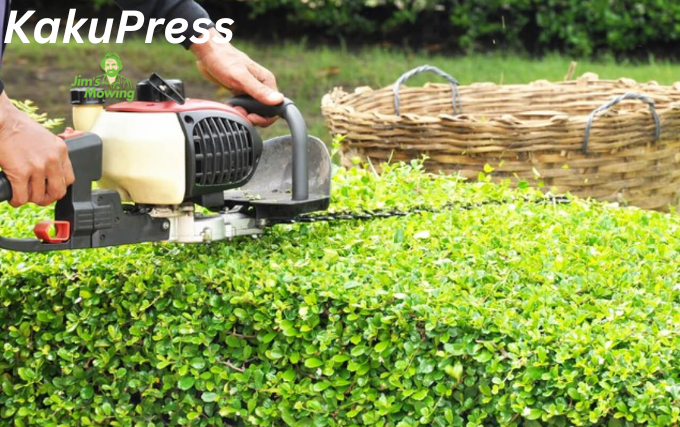You step into the garden on a mild spring morning, and the hedges are already beginning to sprawl. A few snips here and there won’t fix the untidy look. At that point, trimming becomes a chore that could have been avoided.
Well-maintained hedges don’t just look attractive; they help define your outdoor space and support healthy plant growth. With the right approach and timing, trimming doesn’t need to be difficult or expensive.
This guide will discuss the best times to trim, how to prepare, and the techniques that keep your hedges tidy without constant upkeep.
How Hedge Growth Affects Trimming Needs
Each hedge species grows at its own pace, and this plays a key role in knowing when to trim. Learning how your hedge behaves through the seasons will make maintenance easier and more effective.
It can also reduce the risk of common problems like thinning, disease, or overcrowding. Fast-growing varieties such as Leylandii require more frequent attention, particularly in spring and summer, to prevent them from becoming unruly.
If left unchecked, they may block light from reaching nearby plants and dominate garden space. Slower growers, like Box or Yew, don’t need trimming quite as often but still benefit from a steady routine that keeps them compact and healthy.
Trimming during active growth periods encourages dense, balanced regrowth and minimises long-term corrective pruning. Ultimately, understanding these patterns will help you maintain a tidy garden without unnecessary effort or cost.
Best Times of Year to Trim Hedges
For the majority of UK gardens, the best periods to prune hedges are during late spring and again in late summer. A spring trim, once birds have finished nesting, encourages robust growth and helps shape the hedge for the months ahead.
Trimming again at the end of summer tidies things up before autumn sets in and ensures your hedge goes into winter looking neat and well-formed. Winter, particularly in colder areas, is not generally advised for hedge trimming.
Harsh temperatures can stress or damage plants, especially if they’ve been recently cut. However, in regions with milder winters, trimming may still be possible with care.
Keeping an eye on your local climate and speaking to a professional gardener can help you make the right call based on seasonal conditions. Regular trimming helps prevent future issues like excessive growth, pest infestations, and maintains a tidy, well-kept look.
Tools and Preparation
Every good job starts with the right tools. For smaller hedges, handheld shears offer control and clean results. They’re ideal for shaping box borders or finishing touches. For taller or wider hedges, a powered hedge trimmer will make the work faster and less physically demanding.
For thicker branches or neglected hedges, a pair of sharp loppers will give you the cutting strength needed without damaging the plant. Always wear gloves and protective eyewear, especially when working with powered tools.
A spirit level or measuring tape can be helpful for straight lines, particularly on formal hedges. Before getting started, check that all tools are clean and sharp. Dirty blades can transfer diseases between plants, and blunt ones can tear branches, increasing the risk of infection.
Wipe blades with warm soapy water and dry them thoroughly. Use a whetstone or file to sharpen as needed, as sharp tools give cleaner cuts that are better for plant recovery. Investing in reliable, durable tools reduces long-term costs and helps you achieve a more polished result.
If you’re unsure which equipment suits your hedge type, a professional gardening service can provide advice or carry out the work for you.
Practical Techniques for Clean, Healthy Trims
Effective hedge trimming involves more than simply cutting back what’s overgrown. Good technique keeps the hedge healthy and looking balanced.Start from the bottom and gradually move upward as you trim.
This gives you a clearer view of what you’re doing and ensures more even results. Lay a groundsheet or tarp to collect clippings, as this saves time and helps protect the lawn from damage.
To keep lines straight, tie a string between two stakes at the desired height and use it as a guide. This is especially helpful for formal hedges or when trimming along property boundaries.
Choose a dry day to trim, as wet leaves can clog equipment and increase the risk of fungal issues. Focus on one section at a time, and step back regularly to assess progress. Avoid overcutting, which can stress plants and leave gaps that take time to fill.
A light, consistent trim is more effective than aggressive shaping. If the job feels too complex or you’re working with high or uneven hedges, consider calling a professional. They’ll have the right equipment and experience to complete the task safely and to a high standard.
What to Do with Hedge Clippings
Clearing up after trimming is just as important as the cut itself. Proper disposal keeps your garden neat, prevents disease spread, and makes use of organic waste in beneficial ways.
Shredded trimmings from hedges like privet or box can be added to your compost heap, especially when balanced with dry material such as leaves or twigs. This helps improve aeration and speeds up decomposition.
Avoid adding diseased or treated material to compost. Alternatively, you can repurpose clippings as mulch. Spread a light layer around trees or borders to help retain moisture, reduce weeds, and return nutrients to the soil.
Take care not to pile it against stems or trunks, as this can encourage rot or pests. Many UK councils offer green waste collection or drop-off points, which can be a practical option if you’ve tackled a large area or don’t have space for composting.
Whichever method you choose, the key is not letting the waste build up. Regular disposal keeps the space tidy and safe.
Spotting When It’s Time to Trim
Hedges don’t need to look wild before it’s time for a cut. Subtle signs, like uneven growth, sparse foliage, or shading over other plants, can indicate that trimming is due.
Left unchecked, overgrown hedges can weaken structurally and attract unwanted pests, particularly where airflow is limited. By keeping an eye on your hedges throughout the year, you can respond quickly before problems take root.
Seasonal checks, especially in early spring and late summer, allow you to catch early signs of decline or overgrowth. Regular trimming also trains the hedge to grow more densely, improving both appearance and function over time.
If your hedge becomes too difficult to manage or you’re unsure how to bring it back into shape, professional services can offer effective restoration without harming the plant’s long-term health.
Conclusion
Knowing when and how to trim your hedges makes a big difference to your garden’s health and appearance. By observing growth cycles and working with the seasons, you can shape your hedges with ease and confidence.
Proper tools, thoughtful techniques, and regular upkeep all contribute to better results and fewer repairs down the line. Managing clippings responsibly and keeping an eye out for overgrowth will keep your outdoor space tidy and enjoyable throughout the year.
When it feels like more than you can manage alone, professional gardeners can step in to maintain the balance. A well-trimmed hedge is more than a boundary; it’s a sign of a garden cared for with attention and pride.






